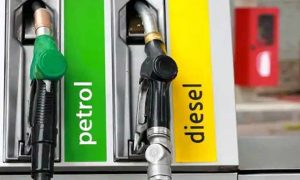European airline passengers could soon face higher ticket prices as the cost of crude oil has surged to its highest level this year at $95 per barrel, due to production and export cuts by Saudi Arabia and Russia. This development has already caused a decline in share prices for US airlines and prompted profit warnings, despite a robust summer season with record profits reported by many airlines.
Read More: HDFC Bank Introduces 3 New Digital Payment Products To Streamline Online Payments
The rise in airfares is also linked to a high demand for travel amid limited aircraft availability, a result of retirements during the pandemic and supply chain shortages. Finnair’s CEO, Topi Manner, foresees further fare increases as airlines grapple with unprecedented fuel costs. Andrew Lobbenberg, Barclays (LON:BARC) aviation analyst, concurs with this outlook, anticipating European airlines will adjust their flying schedules in response to escalating expenses.
Further straining the industry, airlines are paying a significant premium for jet fuel, which now stands at $130 per barrel. Francesco Di Salvo from S&P Global (NYSE:SPGI) Platts attributes this surge to strong travel demand and a deficit of jet fuel in Europe due to OPEC cuts, sanctions on Russia, and high demand for other refined products like diesel.
Read More: Forex Update: India’s Foreign Exchange Reserves Drop $867 Million to $593 Billion; Check Details
Despite these challenges, European airlines have an edge over global rivals as they buy protections against sharp fluctuations in fuel prices. Barclays estimates that European carriers have hedged between 60% and 80% of their anticipated fuel needs for the last quarter of this year and between 16% and 45% for 2024.
In contrast, US airlines typically do not hedge against fuel price fluctuations. This strategy has resulted in a series of profit warnings from them due to increasing fuel costs. Last week, both Delta and American Airlines (NASDAQ:AAL) had to revise their third-quarter guidance downwards because of the escalating fuel costs.
Read More: Gold Price Drops, Silver Goes Up; Demand For Both Metals To Rise During Festive Season
However, Chris Tarry, an aviation industry consultant, warns that airlines can only pass on these costs to customers if the surge in travel demand continues, forecasting a challenging winter for carriers.
Signs of weakening demand, particularly on domestic routes, are already evident in the US. Data from ticketing company Hopper indicates that average airfares for US trips in September and October were down 29% from peak summer months, at $211 per ticket. This represents a 9% drop from last year and a 10% decrease compared to 2019.
This mix of profit warnings and demand concerns has triggered a sell-off in airline shares. Over the past three months, the MSCI World Airlines Index has dipped 16%, while the index tracking US airlines has plunged over 20%, entering a bear market.





































